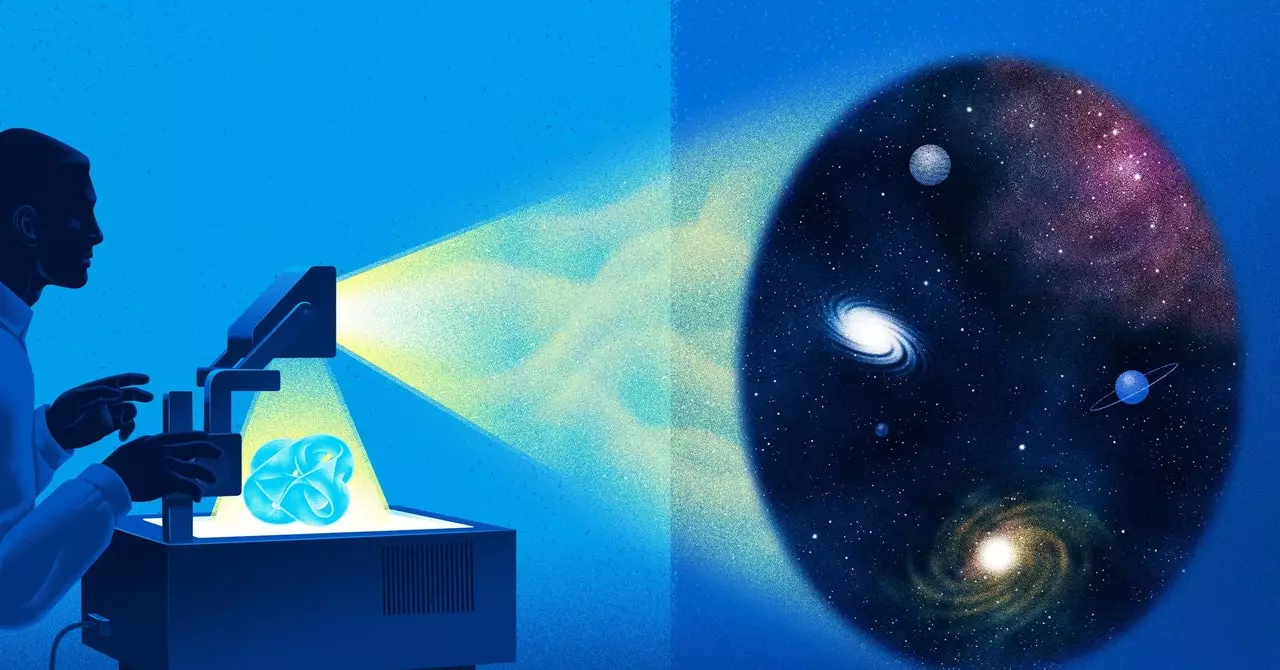Recent advancements in string theory research have brought about a new era of exploration and discovery. One of the most groundbreaking developments comes from a group led by string theory veterans Burt Ovrut of the University of Pennsylvania and Andre Lukas of Oxford. This group has harnessed the power of machine learning to calculate intricate details of Calabi-Yau manifolds, paving the way for a deeper understanding of the underlying structures of our universe.
The team’s use of Ruehle’s metric-calculating software, combined with a sophisticated array of 11 neural networks, has revolutionized the study of string theory. These neural networks have the ability to handle different types of sprinkles within the manifolds, allowing for a more comprehensive analysis of the fields involved. By training these networks to learn and calculate essential properties such as Yukawa couplings and quark masses, the researchers have achieved unprecedented levels of accuracy in their calculations.
While the Calabi-Yau manifolds studied by the team do not directly correspond to our universe, the results serve as a proof of principle for the efficacy of machine learning in string theory research. By demonstrating the ability of neural networks to navigate complex mathematical landscapes and derive particle masses from first principles, the researchers have opened up new possibilities for exploring the fundamental nature of reality.
Despite the remarkable progress made by Ovrut, Lukas, and their collaborators, significant challenges remain on the road to uncovering the secrets of string theory. The complexity of Calabi-Yau manifolds with multiple holes poses a significant hurdle for current neural network algorithms. Additionally, the researchers have only scratched the surface in terms of studying more intricate quantum fields, highlighting the need for more sophisticated machine learning techniques in future studies.
As researchers venture further into the realm of string theory, the sheer magnitude of possible solutions poses a daunting task. The search for a match between string theory solutions and observed particle physics becomes a numbers game, requiring extensive exploration and pattern recognition. By leveraging machine learning to sift through thousands of Calabi-Yau manifolds and identify key features that align with our universe, physicists hope to gain insights that lead to revolutionary discoveries.
While some researchers, like Lukas and his team at Oxford, focus on probing individual manifolds to uncover realistic particle populations, others, such as Thomas Van Riet of KU Leuven, advocate for a broader approach. Van Riet’s “swampland” research program aims to establish overarching principles that govern all mathematically consistent string theory solutions, thereby narrowing down the search space before delving into specific manifold analyses. This divergence in approaches reflects the multifaceted nature of string theory research and the need for a balanced exploration of different avenues.
As the field of string theory continues to evolve, the role of machine learning will become increasingly prominent. By combining the analytical prowess of neural networks with the theoretical foundations of physics, researchers hope to unravel the mysteries of the universe on a scale never before imagined. Whether it’s through intricate calculations of Calabi-Yau manifolds or the identification of universal principles that govern string solutions, machine learning is poised to revolutionize our understanding of the cosmos.


Leave a Reply